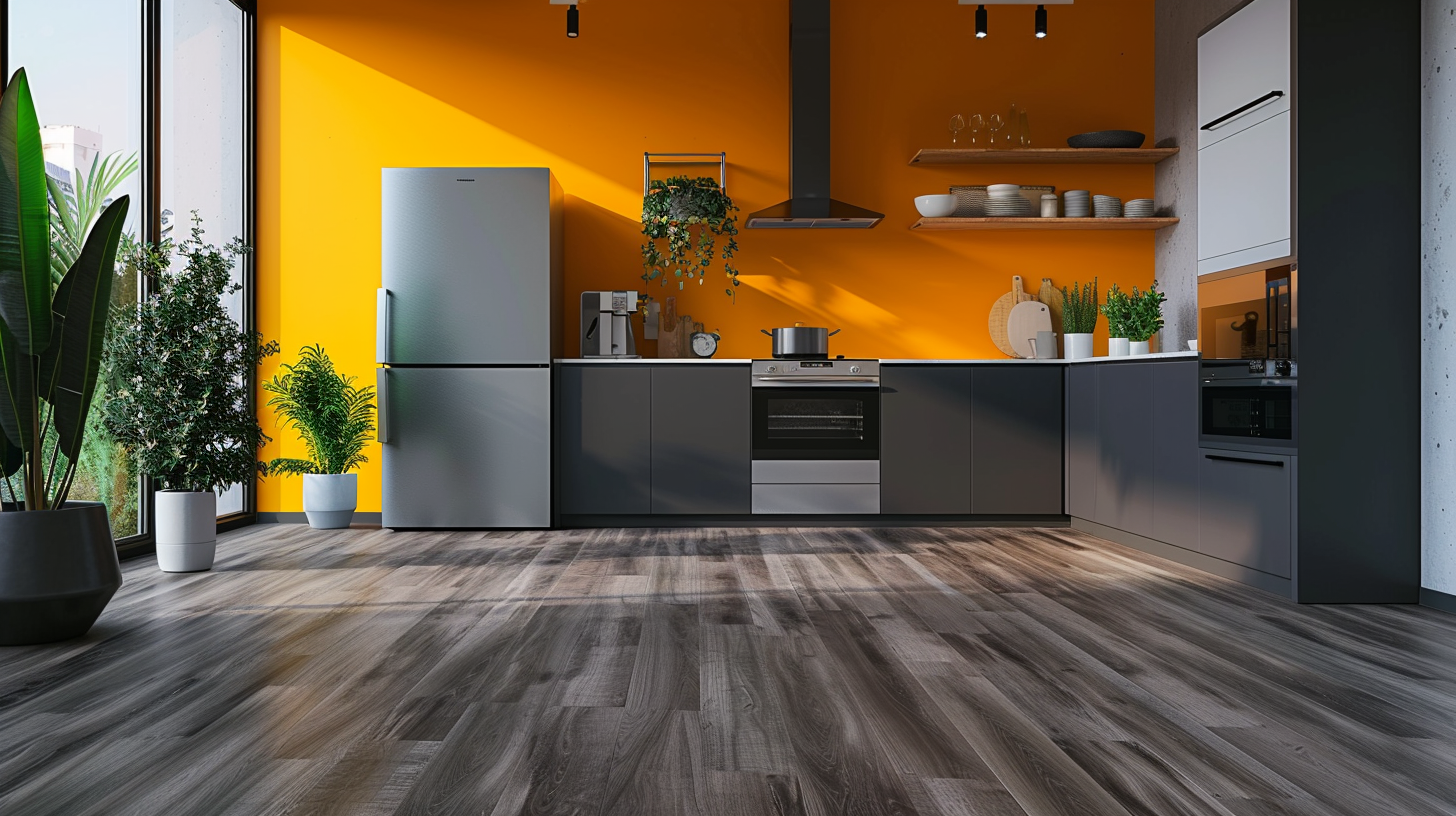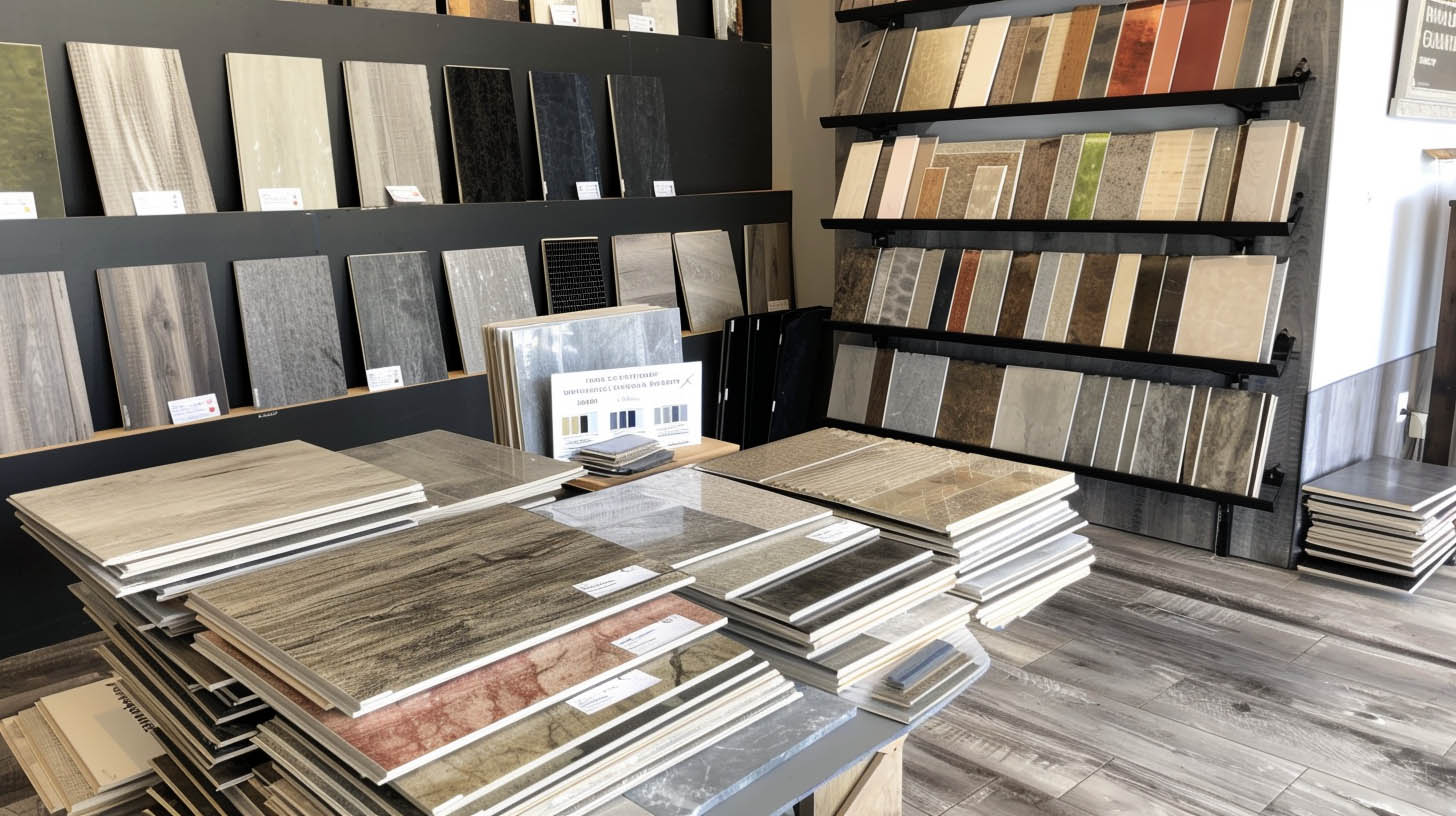
When renovating a kitchen, choosing the right flooring is essential. It needs to withstand spills, high traffic, and heavy appliances while still looking great. So, is vinyl flooring a good choice for your kitchen? Let’s break it down.
Yes, vinyl flooring is an excellent choice for kitchens. It’s water-resistant, easy to maintain, and affordable, making it ideal for high-traffic and spill-prone areas like kitchens.
To help you make an informed decision, we’ll explore its benefits, drawbacks, and comparisons1.
What is the best flooring to put in a kitchen?
Selecting the best kitchen flooring involves balancing durability, aesthetics, and cost.
The best flooring for a kitchen is one that resists water, stands up to wear and tear, and complements the kitchen’s design. [Vinyl, ceramic tiles, and engineered wood]are popular choices.
Dive deeper into top kitchen flooring options
1. Vinyl Flooring
- Pros: Affordable, waterproof, and easy to clean. It comes in various styles, mimicking wood or stone.
- Cons: May not add as much value to your home as tile or wood.
2. Ceramic Tile
- Pros: Extremely durable and water-resistant. Great for high-traffic kitchens.
- Cons: Can feel cold underfoot and may crack if heavy items are dropped.
3. Engineered Wood
- Pros: Adds warmth and elegance. Resists moisture better than solid hardwood.
- Cons: More expensive than vinyl and requires careful maintenance.
Table: Comparing Popular Kitchen Flooring Options
| Flooring Type | Water Resistance | Durability | Cost | Comfort |
|---|---|---|---|---|
| Vinyl | High | Moderate | Affordable | Soft |
| Ceramic Tile | Very High | High | Moderate | Hard |
| Engineered Wood | Moderate | High | Expensive | Warm |
Vinyl stands out as a cost-effective and practical option for most kitchens.
What is the downside of vinyl flooring?
While vinyl flooring offers many benefits, it’s not without its drawbacks.
The main downsides of vinyl flooring include potential denting from heavy objects, susceptibility to fading under sunlight, and limited environmental sustainability. Learn more about vinyl flooring drawbacks2.

Dive deeper into vinyl flooring’s drawbacks
1. Denting and Scratches
- Vinyl can dent under heavy appliances or furniture.
- Sharp objects may leave scratches, though some vinyl types include scratch-resistant coatings.
2. Fading
- Prolonged exposure to direct sunlight can fade vinyl flooring. Adding UV-blocking window treatments can mitigate this issue.
3. Environmental Concerns
- Vinyl is not biodegradable and is less eco-friendly compared to wood or bamboo.
- Some manufacturers offer recyclable options to address sustainability concerns.
Table: Key Downsides of Vinyl Flooring
| Drawback | Description | Mitigation Steps |
|---|---|---|
| Denting | Can occur under heavy objects | Use furniture pads or coasters |
| Fading | Sunlight causes discoloration | Install UV-blocking window films |
| Environmental Impact | Made from non-biodegradable materials | Choose recyclable vinyl options |
Understanding these potential downsides can help you make a more informed decision.
Which is better in a kitchen: laminate or vinyl flooring?
Laminate and vinyl flooring are often compared due to their affordability and similar appearance.
Vinyl flooring3 is better for kitchens because it is water-resistant, more durable, and easier to maintain than laminate flooring.
Dive deeper into laminate vs. vinyl for kitchens
1. Water Resistance
- Vinyl flooring is 100% waterproof, making it ideal for kitchens where spills are common.
- Laminate flooring, while water-resistant, can swell if moisture seeps into its core.
2. Durability
- Vinyl is more resilient against scratches and dents.
- Laminate may chip over time, especially in high-traffic areas.
3. Aesthetics
- Both options can mimic wood or stone, but laminate tends to offer a more realistic texture.
Table: Laminate vs. Vinyl Flooring
| Feature | Laminate Flooring | Vinyl Flooring |
|---|---|---|
| Water Resistance | Moderate | High (Waterproof) |
| Durability | Moderate | High |
| Maintenance | Requires care | Easy |
| Cost | Similar | Similar |
Vinyl flooring’s superior water resistance and durability make it a clear winner for kitchen use.
Can you put kitchen appliances on vinyl flooring?
Kitchen appliances like refrigerators and ovens add weight to your flooring. Can vinyl handle it?
Yes, you can place kitchen appliances on vinyl flooring, but precautions are necessary to prevent damage. Read tips for protecting vinyl flooring under appliances4.
Dive deeper into appliance placement on vinyl
1. Weight Distribution
- Vinyl can dent under concentrated weight. Use appliance coasters or mats to distribute weight evenly.
2. Movement
- When moving appliances, avoid dragging them across the floor. Use sliders or lift the appliance to prevent scratches.
3. Heat Resistance
- Vinyl can withstand heat to a degree, but extreme heat near ovens may affect its integrity. Ensure proper ventilation to minimize this risk.
Table: Tips for Protecting Vinyl Flooring Under Appliances
| Risk | Prevention Tip |
|---|---|
| Dents | Use coasters or protective mats |
| Scratches | Employ sliders when moving |
| Heat Damage | Maintain proper ventilation |
Taking these precautions ensures your vinyl flooring stays in top condition even under heavy kitchen appliances.
Conclusion
Vinyl flooring is an excellent choice for kitchens, offering water resistance, durability, and affordability. While it has some downsides, such as denting and environmental concerns, its benefits far outweigh the drawbacks. By understanding its strengths and taking simple precautions, you can enjoy a stylish, functional kitchen floor that stands the test of time.
Footnotes:
-
Explore the best flooring options for kitchens, including vinyl, tiles, and engineered wood. ↩
-
Learn more about the limitations of vinyl flooring, such as its environmental impact and durability concerns. ↩
-
Compare the pros and cons of laminate and vinyl flooring to determine the best choice for your kitchen. ↩
-
Protect your vinyl flooring from dents and scratches caused by heavy kitchen appliances. ↩


